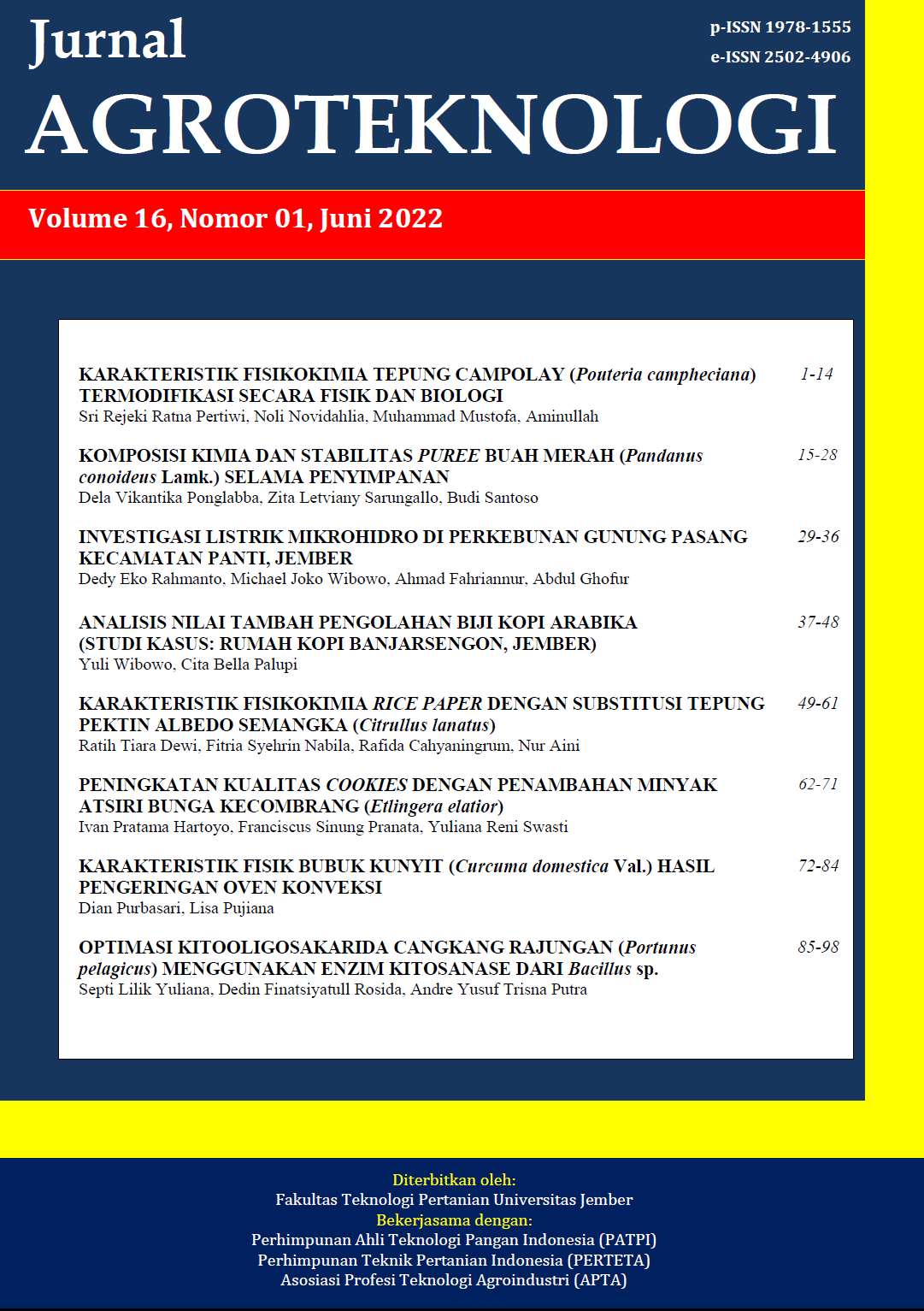OPTIMASI KITOOLIGOSAKARIDA CANGKANG RAJUNGAN (Portunus pelagicus) MENGGUNAKAN ENZIM KITOSANASE DARI Bacillus sp.
DOI:
https://doi.org/10.19184/j-agt.v16i01.28259Abstract
Chitooligosaccharides (COS) are glycoprotein complex compounds derived from chitosan linked by 1,4 glucosidic bonds with chain lengths of 20 or less. Crab shell is a crustacean waste that contains 20-30% chitin as the basic material for making chitooligosaccharides. Chitooligosaccharide hydrolysis can be carried out enzymatically. Enzymatic hydrolysis is specific and controlled. Enzymes that can be used to hydrolyze chitosan into chitooligosaccharides are chitosanase enzymes. Chitosanase enzyme is a glycosyl hydrolase enzyme that catalyzes the hydrolysis of -1,4 glycosidic bonds of chitosan to produce low molecular weight chitooligosaccharides. One of the bacteria that produces chitosanase enzymes, namely Bacillus sp. The purpose of this study was to optimize the production of chitooligosaccharides by treating the enzyme concentration, hydrolysis time, and hydrolysis temperature. This research was conducted using a completely randomized design (CRD) with the following factors: enzyme concentration (0.5%, 1%, 1.5%, 2%, 2.5%) and hydrolysis temperature (30oC, 40oC, 50oC, 60oC, 70oC, 80oC) and time of hydrolysis (1 hour, 2 hours, 3 hours, 4 hours, 5 hours, 6 hours, 7 hours and 8 hours). This enzyme works optimally at pH 4.5. The results showed that this chitosanase enzyme had optimum activity at a concentration of 2% (w/w) chitosan, a temperature of 50oC, and a hydrolysis time of 5 hours. The chitooligosaccharide has a reducing sugar content of 8.49 ± 0.38 mg/mL, a viscosity of 19.08 ± 0.01 cPs, and a molecular weight of 4.51 kDa.
Keywords: chitooligosaccharides, crab shells, chitosanase enzyme, hydrolysis
Downloads
Downloads
Published
Issue
Section
License
Jurnal Agroteknologi has CC-BY-SA or an equivalent license as the optimal license for the publication, distribution, use, and reuse of scholarly work. Authors who publish with this journal retain copyright and grant the journal the right of first publication with the work simultaneously licensed under a Creative Commons Attribution-ShareAlike 4.0 International License that allows others to share the work with an acknowledgment of the work's authorship and initial publication in this journal.
 JURNAL AGROTEKNOLOGI
JURNAL AGROTEKNOLOGI 








.png)
